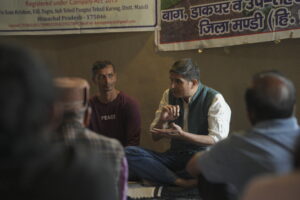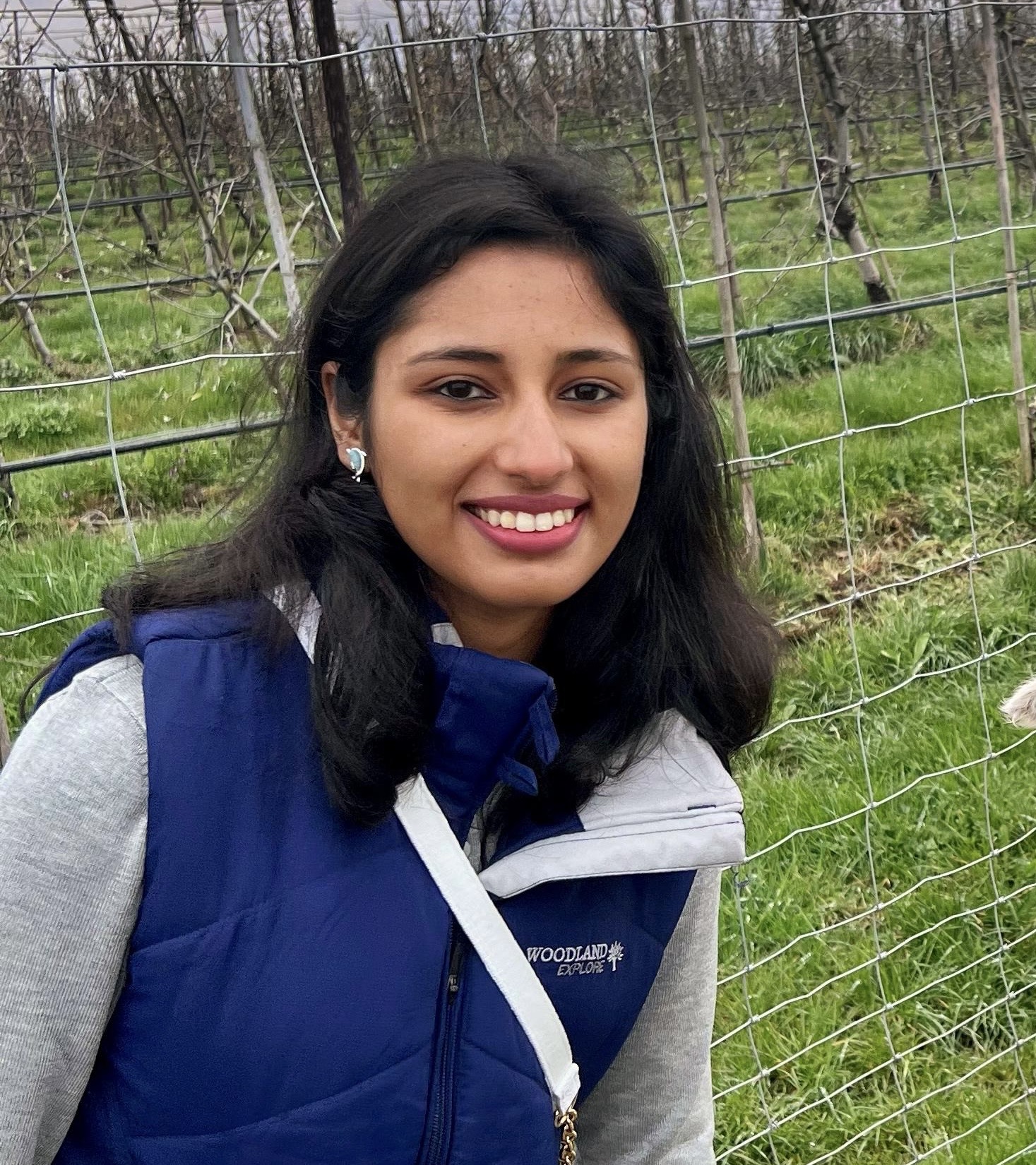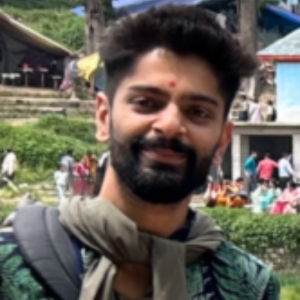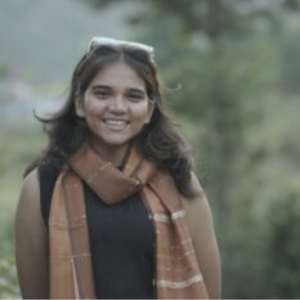On June 1, 2024, these seven interns began their experiential learning journey about the Lauhaars (Blacksmith) community of Pangna.
This internship, conducted by Gram Disha Trust, was divided into two parts: an online component and an offline component. The offline part involved a carefully designed field research period to provide hands-on exposure to the community interactions of Pangna, specifically focusing on the Lauhaars and their associated communities. The offline part was decided in collaboration with the Lauhaars and Farmers of Pangna Valley.
The goal of this internship is to produce a comprehensive document called “Śāstra/Shaastra” that details the craft traditions of the Lauhaar community, their socioeconomic conditions, environment, cultural beliefs, and some of their histories.
As a result, we are returning to Baag village to begin seven days filled with learning.
Meet The Team










Our first day started with a tour of the valley and nearby craftspeople. First was a visit to the home and workshop of Inder Dev Verma Ji, an experienced potter. Watching him work helped us understand the pottery-making process better. He patiently answered our questions and allowed us to handle the materials and tools used in the craft, which included a carefully balanced mixture of gravelly soil (khashar mitti) and clayey soil (chikni mitti).
We soon realized that Inder Dev Ji’s tools, such as the Churru and sandh, were custom-forged for him by the Lauhaars, who have a significant impact on the livelihoods of craftspeople and smallholders in Pangna.
More about the potters craft is here.
To learn more about the Lauhaars, we visited the home of Master Blacksmith Deviram Ji and his nephew, Kishori Lal Ji. Amidst the sounds of sledgehammers shaping metal, we observed and questioned the Lauhaars to understand their role. Deviram Ji skillfully manipulated the glowing hot iron to create tools, while we also had the chance to handle the tools made by the Lauhaars. We also learned about the interactions and transactions communities have had among each other – for example, the Charmkaar Specialists supplied the leather for the bellows to the blacksmith in exchange for tools, and then the blacksmith provided tools to the farmer in exchange for grains. Thus, aspects of Jajmani began to emerge on the first day.
Witnessing the seamless coordination between the blacksmiths and the team of 4 sledgehammers (Ghankar’s) was truly remarkable. We discovered that the members of the team were all family and had been working together for years. Our time there was very informative, leaving us eager for more. Thankfully, we were looking forward to spending more time with Deviram Ji and Kishori Lal Ji over the next few days.
Next on our path was the workshop of Tularam Ji, Pangna’s only bamboo craftsperson. He specializes in building small-scale models of famous buildings and temples, using highly precise cutting and splitting tools. His focus is mostly on the sites of Himachal. We found that the Lauhaars have also influenced his craft. As the first practitioner of such bamboo crafts in Pangna, Tularam Ji’s requirements for a tool are still somewhat unfamiliar to the Lauhaars. He needs highly precise cutting instruments that are so thin, it is difficult for them to be hand-forged.
Know more about the Bamboo Craftsmanship of Tularam Ji here.
At the end of the first day, we understood the reason for the scheduled visits. We began to realize that the association between the Lauhaar and other village communities has developed over centuries, and it takes time to build such a close relationship between two different groups of people.
The second day began with the collection of khashar mitti (gravelly soil) and chikni mitti (clayey soil) from a nearby field. Initially, it seemed odd that Kishori Lal Ji took us to a field that did not belong to him and had us extract soil from it. However, he explained that there is an understanding among the farmers that allows the Lauhaars to take a small amount of soil from the fields without expecting anything in return.
We then observed the mixing of chikni and khashar mitti in a ratio of 5:1. This mixture was used as mortar and plaster to construct a bhatthi (forge) for heating their iron billets and forging tools from them. We were fortunate enough to assist them in building the bhatthi and learned the correct measurement techniques to ensure the right result.
After a day filled with new experiences, Kishori ji informed us that we would soon be heading to Jhungi Gaon to obtain the metal necessary for making the tools we were going to learn about.
The following day, we boarded a bus to Village Jhungi, prepared for the task ahead. Upon arrival, we discovered that Kishori Lal ji and Deviram ji used scrap metal purchased from a trusted dealer. They taught us how to identify the best type of metal for each task and how to select and evaluate it.
Once the metal was collected, it was time to return to Baag and start the forging process. Before igniting his furnace for the first time, a Lauhaar must conduct a puja in honor of Lord Vishwakarma, the patron god of crafts and craftspeople. Kishori ji and Deviram ji led this puja and then lit up their furnace.
The first tool they forged was the Shanesh, a pair of tongs needed for forging the upcoming batch of tools.
Over the next three days, we spent time with the Lauhaar as they created new tools and repaired old ones for the farmers in Baag. Here, a deeper aspect of Jajamani started to appear upon enquiry and interaction with the farmers and their exchange (transactional and knowledge) with the Lauhaar. We learned their techniques of beating, sharpening, grinding, and tempering, among others. These three days were crucial for the technical aspects of the shastra, and one of the interns even had experience commissioning a custom tool from Lauhaar. As part of this exchange, deeper aspects of social and material transactions as part of the Jajmani systems were understood. The data we collected during these three days will form the majority of the shastra and will be detailed there.
In addition to observing the blacksmithing process, we had the opportunity to visit a traditional water mill, or Gharaat, crafted and maintained by master stonemason Mr. Bhuteshwar ji. He explained the entire mechanism he uses to convert the flow of water from a stream passing through his property into a rotational force to grind grain into flour. We also spoke to Todanis, a community of stonebreakers, and these interactions helped us understand the relationship between mason communities and Lauhaar communities. It was clearer that what appeared on the surface as a material transaction was actually a functional social relation between the Todani and the Luhaar, thus our understanding of the Jajmani was further clarified. It was fascinating to learn that the masons had even learned smithing principles to repair their tools.
On the last day of our residency in Baag, we had the somewhat daunting task of presenting our learnings from the past week, as well as our future plans, to the villagers and village organizations that had supported our internship. This was particularly enriching because the people we presented to are the stakeholders in the craft of blacksmithing that we were trying to document, making them a live example of our target audience. It was a privilege to hear their suggestions and comments on our process.
The day ended with yet another great opportunity. We cooked a meal for the residents of Baag, who had provided us with nutritious food throughout our experience. Working in the kitchen not only helped us understand how to cook with the preferred ingredients in Himachal but also brought us closer together as a team.
As the day ended, we saw the residents of Baag enjoy the meal we made and served them, and we were filled with a deep sense of satisfaction.

In just a few days, we interns have been immersed in Pangna’s world of craftspeople. From the potter’s wheel to the blacksmith’s forge, we’ve seen the strong connections between these communities and the Lauhaars. There is still so much to learn, and with each observation and interview, the Shaastra document becomes more enriching. Our journey has just started, and we’re excited to share our experiences as we delve deeper into the heart of Pangna’s crafts! Stay tuned for more updates on our internship adventure as we explore deeper into the heart of Pangna’s crafts!
More about the local craft in Pangna Valley read here.

